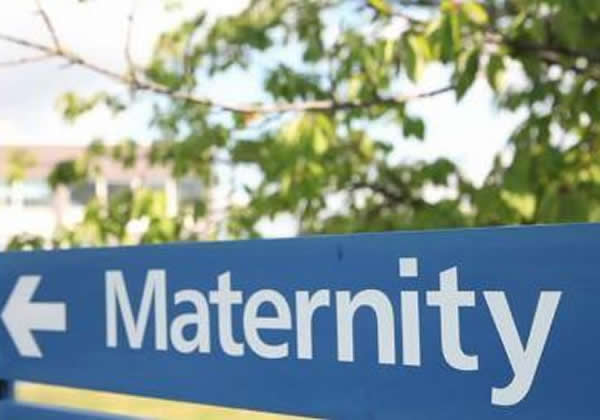Transcript – When to call a midwife
This information is about who to call when you feel like you are in labour, when to ring and what the process is when you phone the hospital or community midwives.
Triage within maternity care refers to a midwife assessing you and your situation and then working with you to make a plan of care. A midwife will ‘triage’ for many reasons and you should always call triage at any time if your baby’s movements have reduced, your water’s have broken, if you see any blood loss in your underwear or if you feel unwell. If you are worried, you can always phone us for advice and support.
When you feel like you are in labour and would like the support of a midwife, you should phone the number your midwife has given you on the front of your maternity notes to speak to a midwife.
Initially, the midwife will begin the telephone discussion by asking you lots of questions about your contractions (including when they began/ how frequent they are/ how strong they are/ and how you are coping), whether your waters have broken, if you have taken any pain relief such as paracetamol and whether the baby is moving as normal. She will then give you some advice on what to do and whether to come into the hospital or stay at home.
What happens next will depend on where you are planning to give birth. Later in pregnancy you will be asked where you would like to give birth. If you are not sure, you can have a conversation with your midwife about your options and preferences in terms of home birth, birth centre (out of or within the hospital) or on the delivery unit at hospital. Your midwife may advise you that a certain birth location may be particularly suitable for you and your baby and will explain why. Wherever you choose to have your baby, you should be supported in your choice.
You will be advised by your midwife at your antenatal appointments on who is best to call when you think that you are in labour, as this will change depending on what hospital you are booked under and where you plan to give birth, but it is often a triage unit, the delivery suite, the birth centre or the community midwives. You will be able to find the right phone number on the front of your maternity notes and can then ring the number which is appropriate for your chosen birth location.
You will be offered a face to face assessment for further support when your contractions are regular, strong, around five minutes apart and lasting around 60 seconds, or if you are struggling to remain comfortable at home. Following the midwife’s telephone assessment, she may advise to see you earlier. A midwife may come out to you at home (if a home birth is planned) or you will be invited to come in to see a midwife in the hospital.
When you see the midwife, she will offer to assess your and your baby’s wellbeing by talking to you and taking measurements such as your heart rate, temperature, blood pressure and testing your urine. She will offer to assess your baby’s position, heart rate and movements and assess your progress in labour by asking about and observing your contractions and offering an internal vaginal examination. The internal examination will show the midwife how soft, thin and dilated (open) the cervix is, as well as how far down in your pelvis your baby has moved. With all of this information the midwife can then make sure that you are in the most appropriate place for you and your baby and that you are getting the right support.






